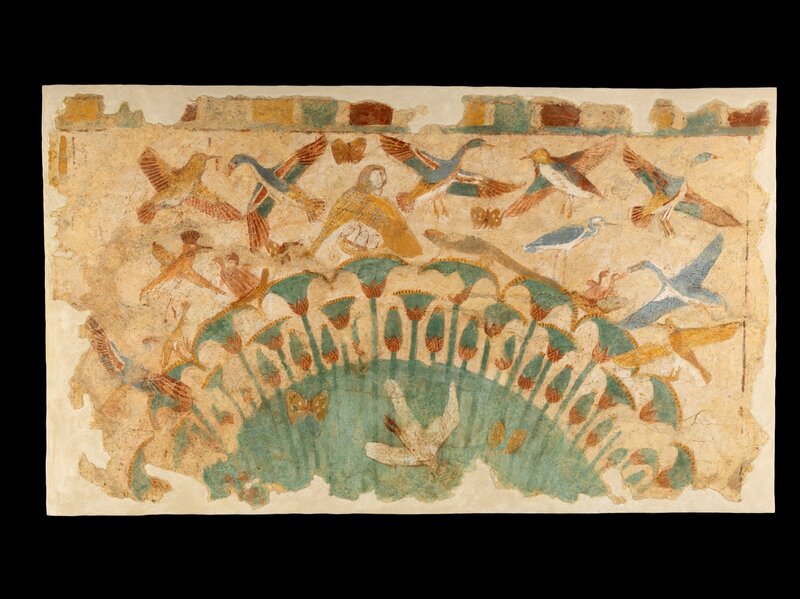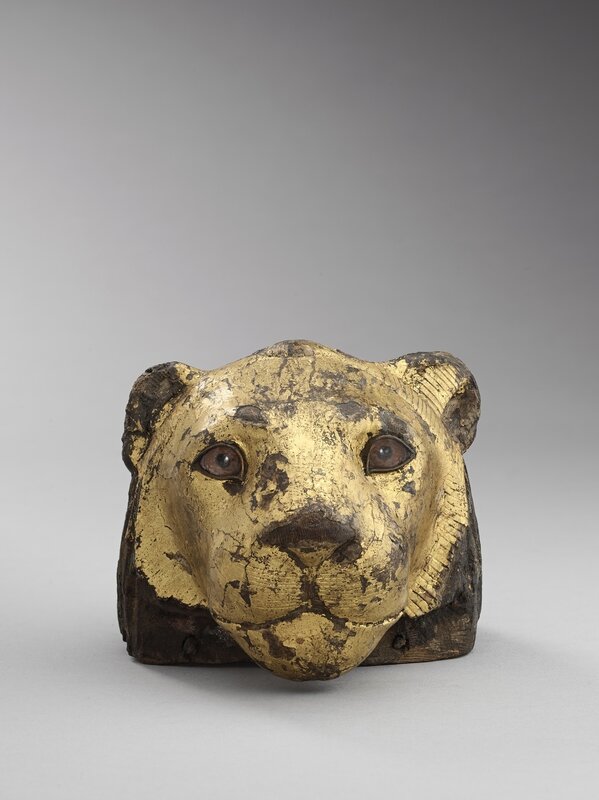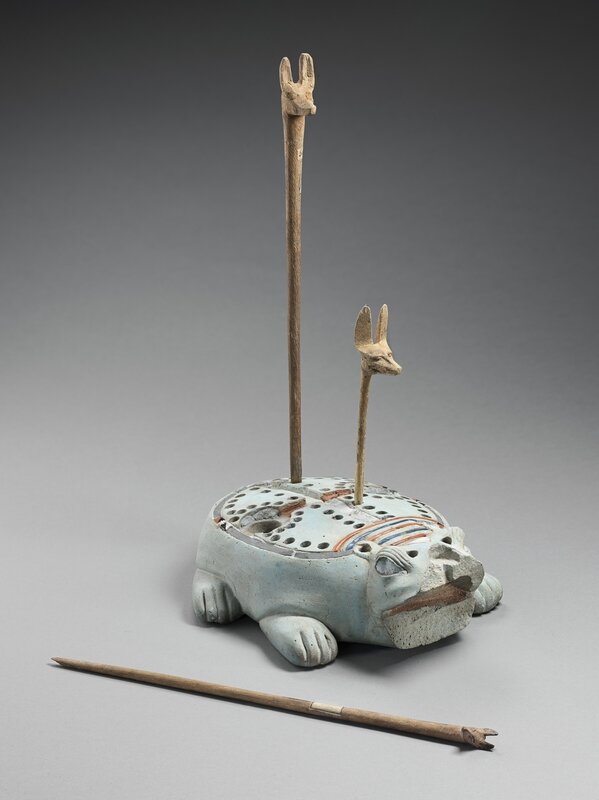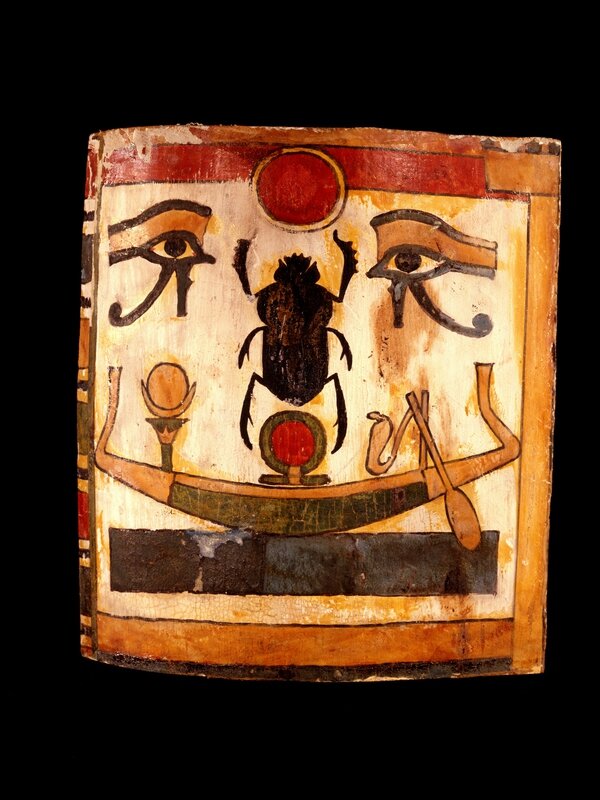![1]()
Giovanni Benedetto Castiglione, A presumed self-portrait, 1640s. Etching, platemark; overall: 188 x 138 mm. Royal Collection Trust / © Her Majesty Queen Elizabeth II 2015.
DENVER, CO.- The Denver Art Museum presents Castiglione: Lost Genius, featuring 90 of the finest drawings, etchings and monotypes of the 17th century Genoese artist, Giovanni Benedetto Castiglione. An almost forgotten master of the Italian Baroque, Castiglione was a self-proclaimed genius. The exhibition explores Castiglione’s mastery of art and how he produced brilliant works on paper despite a turbulent private life that prevented him from fully realizing his talents. The works in the exhibition are generously loaned by Her Majesty The Queen from the Royal Collection. Castiglione: Lost Genius is on view Aug. 9, 2015, through Nov. 8, 2015.
![2]()
Giovanni Benedetto Castiglione, Tobit Burying the Dead, c. 1645-50. Etching, platemark; overall: 20.6 x 30.0 cm. Royal Collection Trust / © Her Majesty Queen Elizabeth II 2015.
“Castiglione was a brilliant artist who blurred the lines of artistic media through draftsmanship to achieve his own creative ends,” said Timothy J. Standring, Gates Foundation Curator of Painting and Sculpture at the DAM and co-curator of the exhibition. “My fascination with this artist began in 1978 through my graduate studies and it is a true pleasure to see this exhibition come to fruition.”
![3]()
Giovanni Benedetto Castiglione, St Francis in prayer, c. 1655. Red-brown and blue-grey oil paint on paper; 34.5 x 21.2 cm (sheet of paper). Royal Collection Trust / © Her Majesty Queen Elizabeth II 2015.
Standring’s ongoing 30-year captivation with the artist led to some intriguing archival discoveries, including Castiglione’s volatile personality and alleged criminal acts including potential murder. Prior to this exhibition, little of the artist’s life was documented, and his works were known mostly by specialists in the field.
![4]()
Giovanni Benedetto Castiglione, Studies of dromedaries and goats, c. 1630. Pen and ink, 18.3 x 20.6 cm (sheet of paper). Royal Collection Trust / © Her Majesty Queen Elizabeth II 2015.
The drawings and prints presented in Castiglione: Lost Genius convey the extraordinary draftsmanship of an artist who drew like no other artist in the 17th century, drawing with oil pigments on unprimed paper for the bulk of his career. He was recognized internationally during his lifetime, but fell from favor during the 19th century. The exhibition unveils Castiglione’s drawing practices during his formative years in Genoa and Rome, mature years spent peripatetically throughout Italy, and finally his last years in Mantua.
![5]()
Giovanni Benedetto Castiglione, The Exposition of Moses, c. 1645. Red-brown oil paint on paper, 39.5 x 55.8 cm (sheet of paper). Royal Collection Trust / © Her Majesty Queen Elizabeth II 2015.
“Audiences in the United States have had little exposure to the works of Castiglione,” said Christoph Heinrich, Frederick and Jan Mayer Director of the DAM. “With this exhibition, we’re pleased to share the incredible story of this artist with our visitors, who are sure to be captivated upon introduction to the devilish and unconventional genius of Castiglione.”
![6]()
Giovanni Benedetto Castiglione, Studies of heads, c. 1635-40. Pen and ink, brush and ink, 14.3 x 19.9 cm (sheet of paper). Royal Collection Trust / © Her Majesty Queen Elizabeth II 2015.
Castiglione was not only a painter and draftsman, he was the revolutionary inventor of the monotype in the 1640s, experimenting with the technique centuries before Post-Impressionist artists such as Degas and Gauguin would in the late 19th century. This technique allowed Castiglione to make a print from one-off designs, allowing him to combine the brio and dash of his draftsmanship with his interest in printmaking.
![7]()
Giovanni Benedetto Castiglione, The Crossing of the Red Sea, c. 1635-40. Red-brown oil paint on paper, 27.6 x 44.5 cm cm (sheet of paper). Royal Collection Trust / © Her Majesty Queen Elizabeth II 2015.
This exhibition has been organized by the Denver Art Museum and Royal Collection Trust. Castiglione: Lost Genius will be on view in the DAM’s Gallagher Family Gallery on level one of the Frederic C. Hamilton Building and will be included in general admission.
![8]()
Giovanni Benedetto Castiglione, Moses Striking the Rock, c. 1640. Red-brown oil paint on paper, 40.3 x 56.5 cm (sheet of paper). Royal Collection Trust / © Her Majesty Queen Elizabeth II 2015.
![9]()
Giovanni Benedetto Castiglione, The Raising of Lazarus, c. 1645-50. Etching , 22.7 x 31.8 cm. Royal Collection Trust / © Her Majesty Queen Elizabeth II 2015.
![10]()
Giovanni Benedetto Castiglione, St Francis in prayer, c. 1655. Dark brown, red-brown and white oil paint on paper, 35.2 x 23.7 cm (sheet of paper). Royal Collection Trust / © Her Majesty Queen Elizabeth II 2015.
![11]()
Giovanni Benedetto Castiglione, Shepherds with a flock, c. 1630-35. Brown oil paint on paper, 20.1 x 25.4 cm (sheet of paper). Royal Collection Trust / © Her Majesty Queen Elizabeth II 2015.
![12]()
Giovanni Benedetto Castiglione, The Exposition of Moses, c. 1645. Red-brown oil paint on paper, 39.2 x 56.1 cm (sheet of paper). Royal Collection Trust / © Her Majesty Queen Elizabeth II 2015.
![13]()
Giovanni Benedetto Castiglione, Moses Showing the Tablets to the People, c. 1635-40. Red-brown oil paint on paper, 32.3 x 47.6 cm (sheet of paper). Royal Collection Trust / © Her Majesty Queen Elizabeth II 2015.
![14]()
Giovanni Benedetto Castiglione, Tobias Demanding the Moneys Owed to his Father, c. 1640. Red-brown oil paint on paper, 40.2 x 54.2 cm (sheet of paper). Royal Collection Trust / © Her Majesty Queen Elizabeth II 2015.
![15]()
Giovanni Benedetto Castiglione, The finding of the bodies of Sts Peter and Paul, c. 1645-50. Etching, 30.2 x 20.7 cm (platemark). Royal Collection Trust / © Her Majesty Queen Elizabeth II 2015.
![16]()
Giovanni Benedetto Castiglione, Two Franciscan saints in devotion, c. 1655. Dark brown, red-brown, grey and white oil paint on paper, 40.4 x 28.0 cm (sheet of paper). Royal Collection Trust / © Her Majesty Queen Elizabeth II 2015.
![17]()
Giovanni Benedetto Castiglione, The Israelites in the Wilderness(?), c. 1640-45. Red-brown oil paint on paper, 29.4 x 41.2 cm (sheet of paper). Royal Collection Trust / © Her Majesty Queen Elizabeth II 2015.
![18]()
Giovanni Benedetto Castiglione, The finding of the bodies of Sts Peter and Paul, c. 1645-50. Etching, 30.2 x 20.7 cm (platemark). Royal Collection Trust / © Her Majesty Queen Elizabeth II 2015.
![19]()
Giovanni Benedetto Castiglione, A shepherd driving a flock, c. 1630-35. Yellowish-brown oil paint on paper, 23.1 x 33.6 cm (sheet of paper). Royal Collection Trust / © Her Majesty Queen Elizabeth II 2015.
![20]()
Giovanni Benedetto Castiglione, The Adoration of the Shepherds, c. 1645. Red-brown oil paint on paper, 39.4 x 55.6 cm (sheet of paper). Royal Collection Trust / © Her Majesty Queen Elizabeth II 2015.
![21]()
Giovanni Benedetto Castiglione, A man in a plumed headdress, c. 1645-50. Etching , 10.8 x 8.0 cm (sheet of paper). Royal Collection Trust / © Her Majesty Queen Elizabeth II 2015.
![22]()
Giovanni Benedetto Castiglione, Women and children praying before a tomb, c. 1640-45. Red-brown oil paint on paper, 55.2 x 40.0 cm (sheet of paper). Royal Collection Trust / © Her Majesty Queen Elizabeth II 2015.
![23]()
Giovanni Benedetto Castiglione, Diogenes Searching for an Honest Man, c. 1645-50. Etching , 22.0 x 30.5 cm (platemark). Royal Collection Trust / © Her Majesty Queen Elizabeth II 2015.
![24]()
Giovanni Benedetto Castiglione, St Francis in prayer, c. 1655. Dark brown, grey and white oil paint on paper, 34.5 x 22.7 cm (sheet of paper). Royal Collection Trust / © Her Majesty Queen Elizabeth II 2015.
![25]()
Giovanni Benedetto Castiglione, A young shepherd with a flock, c. 1630-35. Yellowish-brown oil paint on paper, 24.5 x 38.6 cm (sheet of paper). Royal Collection Trust / © Her Majesty Queen Elizabeth II 2015.
![26]()
Giovanni Benedetto Castiglione, Figures in a landscape with a satyr playing the pipes, c. 1645. Red-brown oil paint on paper, 39.9 x 56.0 cm (sheet of paper). Royal Collection Trust / © Her Majesty Queen Elizabeth II 2015.
![27]()
Giovanni Benedetto Castiglione, A landscape with a pastoral journey, c. 1640-45. Pen and ink, 26.6 x 19.1 cm (sheet of paper). Royal Collection Trust / © Her Majesty Queen Elizabeth II 2015.
![27-2]()
Giovanni Benedetto Castiglione, St Francis embracing the Cross, c. 1655. Dark brown, red-brown, grey and white oil paint on paper, 39.8 x 28.3 cm (sheet of paper). Royal Collection Trust / © Her Majesty Queen Elizabeth II 2015.
![28]()
Giovanni Benedetto Castiglione, The Animals Leaving the Ark, c. 1630-35. Brown and blue oil paint on paper, 23.3 x 37.6 cm (sheet of paper). Royal Collection Trust / © Her Majesty Queen Elizabeth II 2015.
![29]()
Giovanni Benedetto Castiglione, The Nativity with God the Father, c. 1650-60. Red-brown oil paint on paper, 39.8 x 54.8 cm (sheet of paper). Royal Collection Trust / © Her Majesty Queen Elizabeth II 2015.
![30]()
Giovanni Benedetto Castiglione, A youth blowing a trumpet, c. 1645-50. Etching , 10.8 x 8.0 cm (platemark). Royal Collection Trust / © Her Majesty Queen Elizabeth II 2015.
![31]()
Giovanni Benedetto Castiglione, A landscape with flocks, c. 1640-45. Pen and ink, 16.5 x 21.9 cm (sheet of paper). Royal Collection Trust / © Her Majesty Queen Elizabeth II 2015.
![32]()
Giovanni Benedetto Castiglione, Circe with the Companions of Odysseus Transformed into Animals, c. 1650. Etching , 21.8 x 31.1 cm (platemark). Royal Collection Trust / © Her Majesty Queen Elizabeth II 2015.
![33]()
Giovanni Benedetto Castiglione, A group of figures in terror or adoration, c. 1655. Pen and ink, 19.0 x 34.0 cm (sheet of paper). Royal Collection Trust / © Her Majesty Queen Elizabeth II 2015.
![34]()
Giovanni Benedetto Castiglione, Shepherds with animals, c. 1635. Pen and ink, 18.6 x 36.1 cm (sheet of paper). Royal Collection Trust / © Her Majesty Queen Elizabeth II 2015.
![35]()
Giovanni Benedetto Castiglione, The Virgin and Child with Saints Catherine and Mary Magdalene, c. 1655-60. Red-brown oil paint on paper, 35.8 x 44.7 cm (sheet of paper). Royal Collection Trust / © Her Majesty Queen Elizabeth II 2015.
![36]()
Giovanni Benedetto Castiglione, A man in an oriental headdress, with other studies, c. 1645-50. Etching , 9.9 x 8.0 cm (platemark). Royal Collection Trust / © Her Majesty Queen Elizabeth II 2015.
![37]()
Giovanni Benedetto Castiglione, The Entry of the Animals into the Ark, c. 1650. Etching , 20.7 x 40.2 cm (platemark). Royal Collection Trust / © Her Majesty Queen Elizabeth II 2015.
![38]()
Giovanni Benedetto Castiglione, Aeneas carrying Anchises out of the Burning Troy, c. 1655. Pen and ink, 21.2 x 16.8 cm (sheet of paper). Royal Collection Trust / © Her Majesty Queen Elizabeth II 2015.
![39]()
Giovanni Benedetto Castiglione, Jacob Moving the Stone from the Well to Water Rachel's Flock, c.1635. Brown oil paint on paper, 22.8 x 34.5 cm (sheet of paper). Royal Collection Trust / © Her Majesty Queen Elizabeth II 2015.
![40]()
Giovanni Benedetto Castiglione, The Search of Joseph's Brothers' Baggage, c. 1645. Red-brown oil paint on paper, 39.4 x 55.7 cm (sheet of paper). Royal Collection Trust / © Her Majesty Queen Elizabeth II 2015.
![41]()
Giovanni Benedetto Castiglione, A man holding a scroll, c. 1645-50. Etching, 10.8 x 8.1 cm (platemark). Royal Collection Trust / © Her Majesty Queen Elizabeth II 2015.
![42]()
Giovanni Benedetto Castiglione, A landscape with shepherds and a flock, c. 1640-45. Brown and red-brown oil paint on paper, 33.8 x 47.8 cm (sheet of paper). Royal Collection Trust / © Her Majesty Queen Elizabeth II 2015.
![43]()
Giovanni Benedetto Castiglione, The Nativity with God the Father and Angels, c. 1650. Etching , 20.7 x 40.2 cm (platemark). Royal Collection Trust / © Her Majesty Queen Elizabeth II 2015.
![44]()
Giovanni Benedetto Castiglione, Venus and Adonis, c. 1655. Pen and ink, 22.4 x 33.5 cm (sheet of paper). Royal Collection Trust / © Her Majesty Queen Elizabeth II 2015.
![45]()
Giovanni Benedetto Castiglione, Women and children praying before a tomb, c. 1635-40. Pen and ink, 31.1 x 21.2 cm (sheet of paper). Royal Collection Trust / © Her Majesty Queen Elizabeth II 2015.
![46]()
Giovanni Benedetto Castiglione, A woman with children and animals resting in a landscape, c. 1645. Red-brown oil paint on paper, 40.1 x 51.2 cm (sheet of paper). Royal Collection Trust / © Her Majesty Queen Elizabeth II 2015.
![47]()
Giovanni Benedetto Castiglione, A man looking downwards, c. 1645-50. Etching, 10.8 x 8.0 cm (platemark). Royal Collection Trust / © Her Majesty Queen Elizabeth II 2015.
![48]()
Giovanni Benedetto Castiglione, Vanitas , c. 1655. Pen and ink, 22.2 x 34.3 cm (sheet of paper). Royal Collection Trust / © Her Majesty Queen Elizabeth II 2015.
![49]()
Giovanni Benedetto Castiglione, Sacred and Profane Love, c. 1635. Coloured oil paints on paper, 21.6 x 29.5 cm (sheet of paper). Royal Collection Trust / © Her Majesty Queen Elizabeth II 2015.
![50]()
Giovanni Benedetto Castiglione, A shepherd and flock in a landscape, c. 1645. Red-brown oil paint on paper, 39.1 x 55.8 cm (sheet of paper). Royal Collection Trust / © Her Majesty Queen Elizabeth II 2015.
![51]()
Giovanni Benedetto Castiglione, An old man wearing a turban, c. 1645-50. Etching, 10.9 x 8.2 cm (platemark). Royal Collection Trust / © Her Majesty Queen Elizabeth II 2015.
![52]()
Giovanni Benedetto Castiglione, St Bartholomew, c. 1655. Red-brown and blue-grey oil paint on paper, 37.5 x 23.2 cm (sheet of paper). Royal Collection Trust / © Her Majesty Queen Elizabeth II 2015.
![53]()
Giovanni Benedetto Castiglione, The Saving of the Infant Pyrrhus, c. 1635-40. Brown oil paint on paper, 26.0 x 37.8 cm (sheet of paper). Royal Collection Trust / © Her Majesty Queen Elizabeth II 2015.
![54]()
Giovanni Benedetto Castiglione, A shepherd carrying an urn, with his flock, c. 1645. Red and yellow oil paint on paper, 26.0 x 37.8 cm (sheet of paper). Royal Collection Trust / © Her Majesty Queen Elizabeth II 2015.
![55]()
Giovanni Benedetto Castiglione, A young woman wearing a turban, c. 1645-50. Etching, 10.5 x 8.0 cm (platemark). Royal Collection Trust / © Her Majesty Queen Elizabeth II 2015.
![56]()
Giovanni Benedetto Castiglione, A shepherd watering his flock, c. 1655-60. Red-brown and blue-grey oil paint on paper, 30.2 x 24.9 cm (sheet of paper). Royal Collection Trust / © Her Majesty Queen Elizabeth II 2015.
![57]()
Giovanni Benedetto Castiglione, A shepherd boy on a horse, c. 1635. Etching. Royal Collection Trust / © Her Majesty Queen Elizabeth II 2015.
![58]()
Giovanni Benedetto Castiglione, An Allegory in Honour of the Duchess of Mantua, c. 1650-55. Dark reddish-brown and dark red oil paint on paper, 39.2 x 54.9 cm (sheet of paper). Royal Collection Trust / © Her Majesty Queen Elizabeth II 2015.
![59]()
Giovanni Benedetto Castiglione, A young man with his head lowered, c. 1645-50. Etching, 11.0 x 8.0 cm (platemark). Royal Collection Trust / © Her Majesty Queen Elizabeth II 2015.
![60]()
Giovanni Benedetto Castiglione, Circe, c. 1650-55. Brown and red-brown oil paint on paper, 39.4 x 56.0 cm (sheet of paper). Royal Collection Trust / © Her Majesty Queen Elizabeth II 2015.
![61]()
Giovanni Benedetto Castiglione, Pan and Syrinx, c. 1655-60. Red-brown oil paint on paper, 28.4 x 43.7 cm (sheet of paper). Royal Collection Trust / © Her Majesty Queen Elizabeth II 2015.
![62]()
Giovanni Benedetto Castiglione, Omnia Vanitas, c. 1650-55. Dark reddish-brown oil paint on paper, 39.2 x 54.4 cm (sheet of paper). Royal Collection Trust / © Her Majesty Queen Elizabeth II 2015.
![63]()
Giovanni Benedetto Castiglione, A man in an oriental headdress, c. 1645-50. Etching, 18.4 x 13.7 cm (platemark). Royal Collection Trust / © Her Majesty Queen Elizabeth II 2015.
![65]()
Giovanni Benedetto Castiglione, The Choice of Hercules, c. 1655-60. Red-brown and blue-grey oil paint on paper, 33.8 x 25.8 cm (sheet of paper). Royal Collection Trust / © Her Majesty Queen Elizabeth II 2015.
![66]()
Giovanni Benedetto Castiglione, A family with a laden ass resting in a landscape, c. 1650-55. Red-brown oil paint on paper, 40.9 x 55.5 cm (sheet of paper). Royal Collection Trust / © Her Majesty Queen Elizabeth II 2015.
![64]()
Giovanni Benedetto Castiglione, A bearded man looking down, c. 1645-50. Etching, 18.0 x 15.1 cm (platemark). Royal Collection Trust / © Her Majesty Queen Elizabeth II 2015.
![67]()
Giovanni Benedetto Castiglione, Noah Leading the Animals into the Ark, c. 1655-60. Red-brown and blue-grey oil paint on paper, 31.1 x 26.1 cm (sheet of paper). Royal Collection Trust / © Her Majesty Queen Elizabeth II 2015.
![68]()
Giovanni Benedetto Castiglione, A black page holding hounds, c. 1650-55. Red-brown oil paint on paper, 41.2 x 55.7 cm (sheet of paper). Royal Collection Trust / © Her Majesty Queen Elizabeth II 2015.
![69]()
Giovanni Benedetto Castiglione, A man in a plumed hat and scarf, his face in shadow, c. 1645-50. Etching, 18.0 x 14.9 cm (platemark) . Royal Collection Trust / © Her Majesty Queen Elizabeth II 2015.
![70]()
Giovanni Benedetto Castiglione, The Exposition of Moses, c. 1655-60. Red-brown and blue-grey oil paint on paper, 36.9 x 23.8 cm (sheet of paper) . Royal Collection Trust / © Her Majesty Queen Elizabeth II 2015.
![71]()
Giovanni Benedetto Castiglione, The Adoration of the Magi, c. 1650-55. Red-brown oil paint on paper, 41.7 x 57.3 cm (sheet of paper) . Royal Collection Trust / © Her Majesty Queen Elizabeth II 2015.
![A man in an oriental headdress]()
Giovanni Benedetto Castiglione, A man in an oriental headdress, c. 1645-50. Etching, 17.8 x 14.8 cm (platemark) . Royal Collection Trust / © Her Majesty Queen Elizabeth II 2015.
![73]()
Giovanni Benedetto Castiglione, A family with animals in a landscape, c. 1660. Red-brown and blue-grey oil paint on paper, 29.3 x 39.8 cm (sheet of paper) . Royal Collection Trust / © Her Majesty Queen Elizabeth II 2015.
![74]()
Giovanni Benedetto Castiglione, The head of an oriental, c.1645-50. Monotype with black oil paint and brown wash on brown-toned paper, 31.7 x 23.6 cm (sheet of paper) . Royal Collection Trust / © Her Majesty Queen Elizabeth II 2015.
![75]()
Giovanni Benedetto Castiglione, The Finding of Cyrus, c. 1655-60. Red-brown, coloured and white oil paint on paper, 34.5 x 24.0 cm (sheet of paper) . Royal Collection Trust / © Her Majesty Queen Elizabeth II 2015.
![76]()
Giovanni Benedetto Castiglione, Temporalis Aeternitas, dated 1645. Monotype, 29.6 x 20.1 cm (sheet of paper) . Royal Collection Trust / © Her Majesty Queen Elizabeth II 2015.
![77]()
Giovanni Benedetto Castiglione, The Sacrifice of Noah, c. 1655-60. Red-brown and blue-grey oil paint on paper, 35.0 x 26.4 cm (sheet of paper). Royal Collection Trust / © Her Majesty Queen Elizabeth II 2015.
![78]()
Giovanni Benedetto Castiglione, A satyr seated beside a statue of Priapus, c. 1645. Etching, 11.7 x 21.3 cm (platemark). Royal Collection Trust / © Her Majesty Queen Elizabeth II 2015.
![79]()
Giovanni Benedetto Castiglione, The Raising of Lazarus, c. 1660. Red-brown and white oil paint on paper, 29.5 x 40.4 cm (sheet of paper) . Royal Collection Trust / © Her Majesty Queen Elizabeth II 2015.
![80]()
Giovanni Benedetto Castiglione, Pan seated near a vase, c. 1645. Etching, 11.5 x 21.4 cm (platemark) . Royal Collection Trust / © Her Majesty Queen Elizabeth II 2015.
![81]()
Giovanni Benedetto Castiglione, Shepherds and flocks, c. 1660-64. Red-brown, blue-grey and crimson oil paint on paper, 23.3 x 31.8 cm (sheet of paper) . Royal Collection Trust / © Her Majesty Queen Elizabeth II 2015.
![82]()
Giovanni Benedetto Castiglione, Laban Seeking his Idols, c. 1660. Red-brown and blue-grey oil paint on paper, 22.7 x 34.5 cm (sheet of paper). Royal Collection Trust / © Her Majesty Queen Elizabeth II 2015.
![83]()
Giovanni Benedetto Castiglione, The Adoration of the Kings, c. 1660-64. Red-brown and blue-grey oil paint on paper, 24.2 x 35.3 cm (sheet of paper) . Royal Collection Trust / © Her Majesty Queen Elizabeth II 2015.
![The Genius of Castiglione dated 1648]()
Giovanni Benedetto Castiglione, The Genius of Castiglione, dated 1648. Etching , 37.2 x 25.0 cm (platemark). Royal Collection Trust / © Her Majesty Queen Elizabeth II 2015.


















































































































































































































